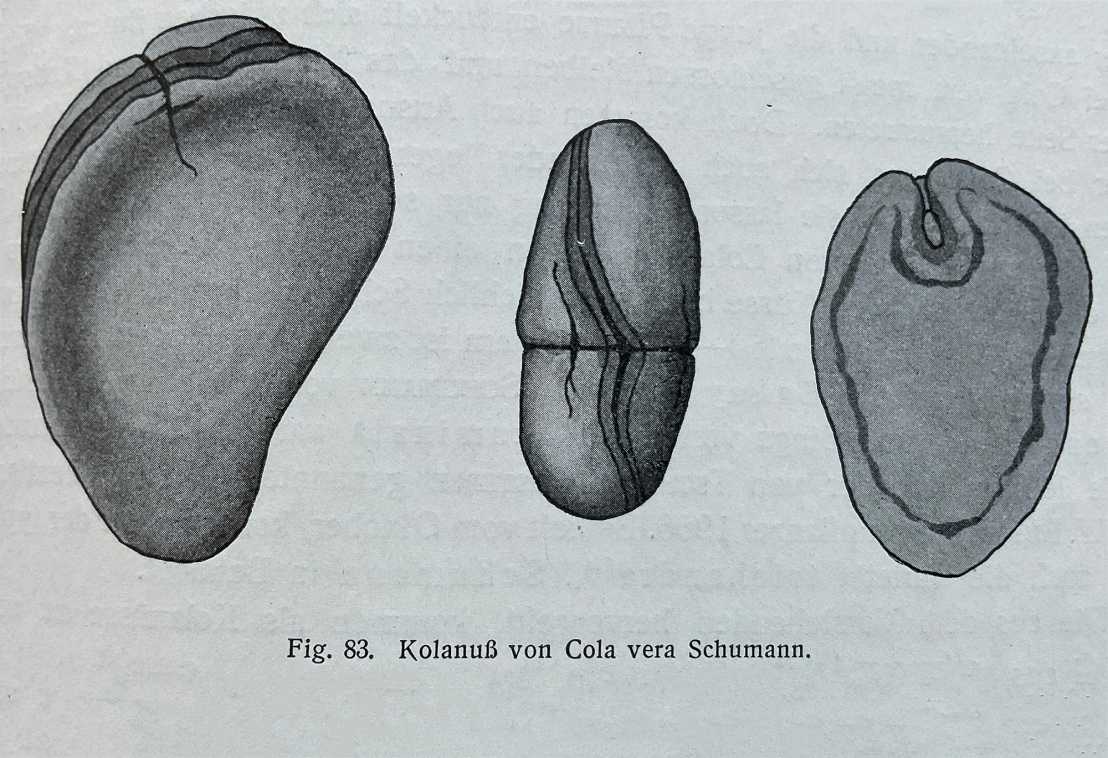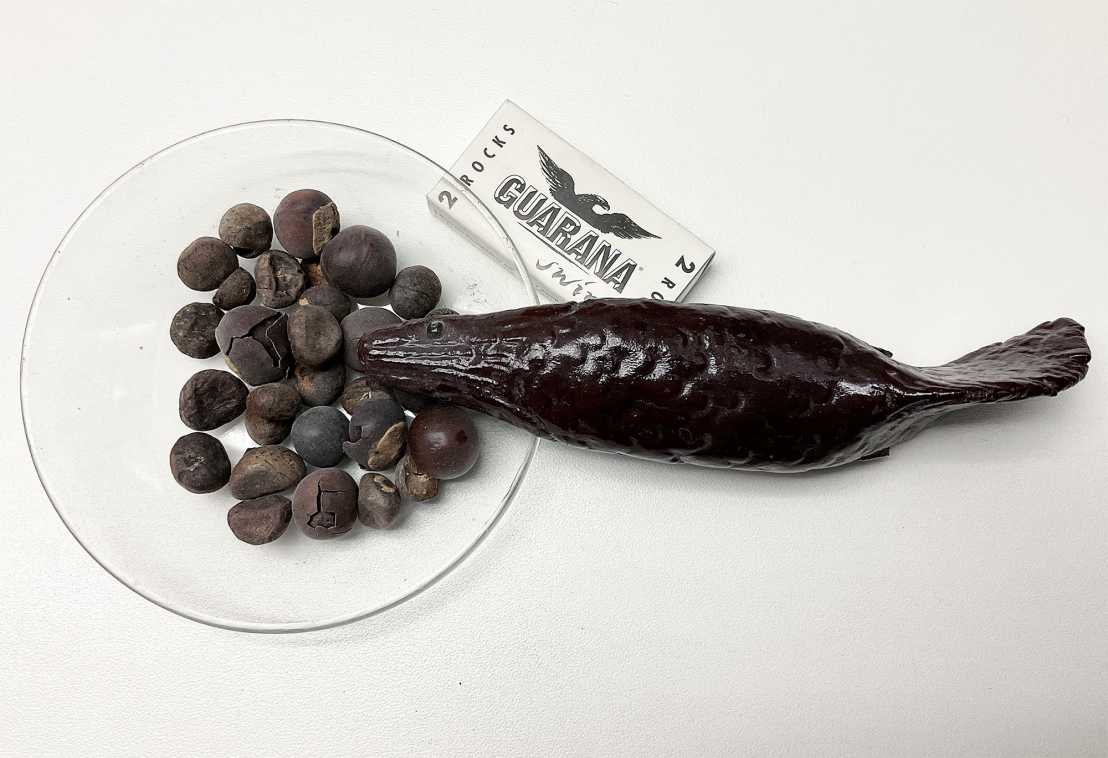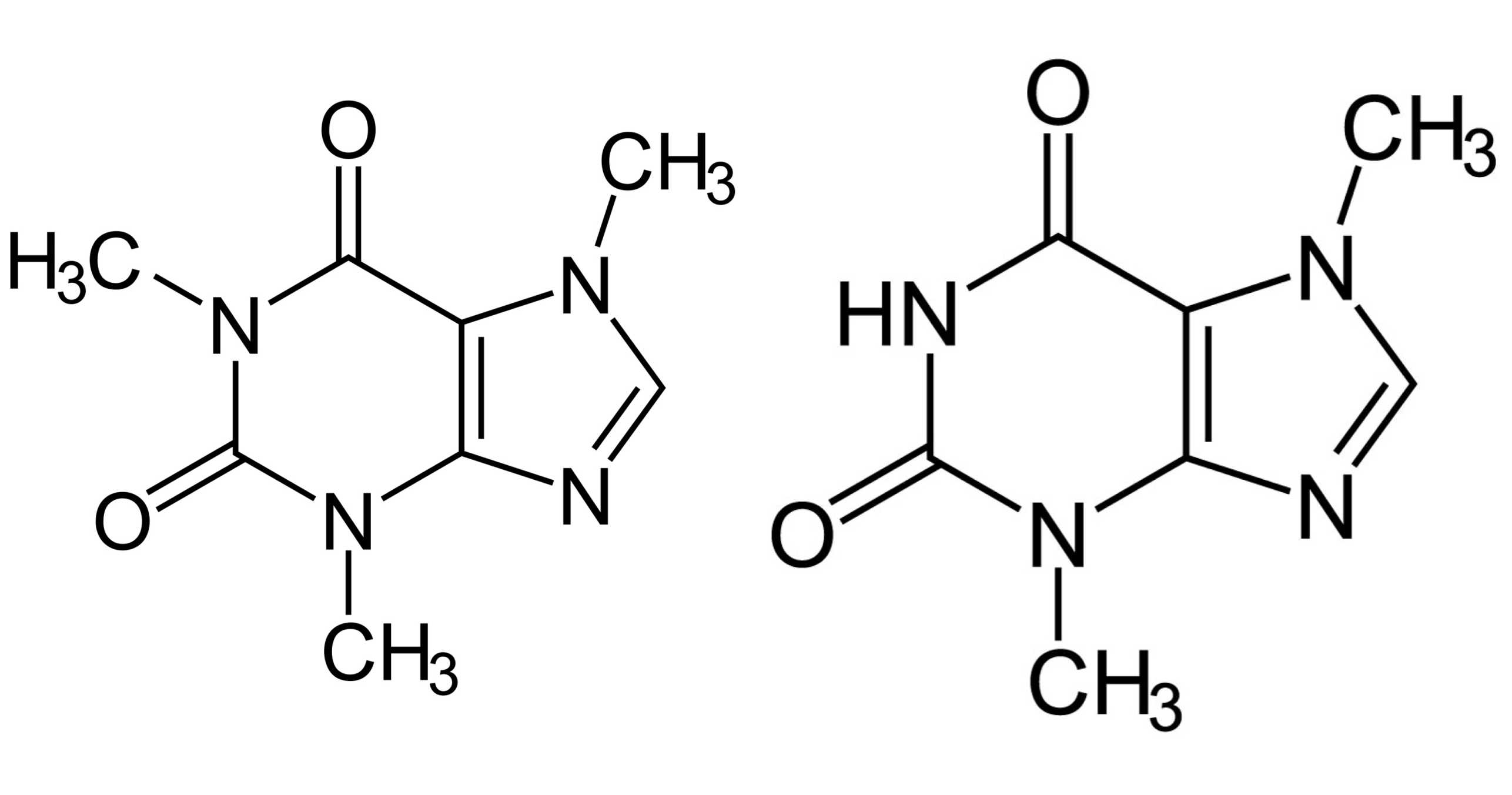Mate, Cola, Guaraná
Cola nut (cola for short), mate, and guaraná have two things in common: they contain purine bases and have a stimulating effect. This is about powerful seeds and leaves.
Mate – a drink with many names

Mate, also known as Paraguay tea, Parana tea or Jesuit tea, is an infusion made from the leaves of the mate shrub Ilex paraguariensis and other caffeine-containing species of the holly family – evergreen trees up to 15 meters high with leathery leaves, native to South America. For tea, the leaves are heat-dried, forming aromatic substances. After cutting, they can be infused with water. The infusion was traditionally enjoyed from a hollow, often decorated gourd, known as "mate" in the Inca language. A sieve spoon (bombilla) was used to retain the leaves. Today, mate is still a national drink in many parts of South America and is also enjoyed as a stimulating beverage in our country.
From the cola nut to the soft drink

If you think the cola nut is a nut, you are wrong. Botanically, it is the cotyledons of the cola tree seeds, which are native to Africa. There, their consumption has a long tradition: in some places it is a sign of hospitality; chewed raw, they are used as a medicine, an aphrodisiac or are consumed as an appetite suppressant – by soldiers, for example. The effect comes from alkaloids containing caffeine and theobromine – the latter is also known from cocoa. These substances – chemically bound in a different way in the cola nut – have a stimulating effect. The cola nut came to Europe around the 16th century, but it became famous as an additive in the soft drink cola.
Guaraná – caffeine bomb from the Amazon

Guaraná is named after the Indian people of the Guarani. It is obtained from the seed of the guaraná plant, Paullinia cupana, a soap tree native mainly to the Amazon area. The method of production depends on the location. Hartwich described a process by which the fruits were soaked, the seeds removed, roasted, crushed and mixed with water to form a paste. This paste was molded and dried (to Europe, guaraná came mostly as a cylinder). For the drink, people ground this hard paste, poured cold water on it and then enjoyed the "aqua branca" (white water). Guaraná contains a relatively high amount of caffeine (significantly more than coffee or mate), whereby the caffeine is bound to a tannin. Guaraná probably reached Europe around the beginning of the 19th century and is still consumed here today.
